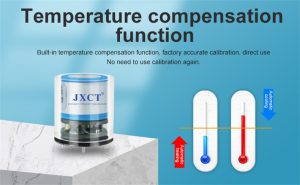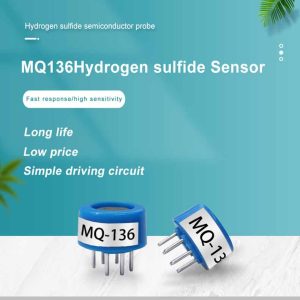Air pollution is a pressing global issue with significant implications for human health and the environment. To effectively combat air pollution, it is crucial to monitor pollutant levels accurately. Gas sensors have emerged as vital tools in detecting and measuring air pollutants, providing valuable data for environmental health management. This article explores the implications of investigating pollutant levels using gas sensors and highlights the potential benefits for environmental health.

The Significance of Monitoring Pollutant Levels:
Air pollution poses severe risks to human health, climate change, and ecosystem health. According to the World Health Organization (WHO), exposure to harmful air pollutants contributes to approximately seven million premature deaths annually. Monitoring pollutant levels using gas sensors is fundamental in identifying pollution sources, assessing the effectiveness of interventions, and formulating evidence-based policies to mitigate risks.
Applications of Gas Sensors in Environmental Monitoring:
2.1. Industrial Monitoring: Gas sensors play a crucial role in detecting and monitoring pollutants emitted by industries, including nitrogen oxides (NOx), sulfur dioxide (SO2), and carbon monoxide (CO). This information enables policymakers to enforce regulations and encourage the adoption of cleaner technologies.
2.2. Traffic Monitoring: Vehicle emissions are a significant contributor to air pollution in urban areas. Gas sensors can monitor pollutant levels such as particulate matter (PM), nitrogen oxides (NOx), and ozone (O3), providing valuable insights for urban planning, transportation policies, and emission control measures.
2.3. Indoor Air Quality Monitoring: Gas sensors are used to detect pollutants such as volatile organic compounds (VOCs), formaldehyde, and carbon dioxide (CO2) indoors. By ensuring healthy indoor environments, these sensors contribute to overall well-being and productivity.
Benefits of Gas Sensor Monitoring:
3.1. Public Health Protection: Gas sensor monitoring allows for the identification of pollutant sources and hotspots, enabling targeted interventions to reduce exposure. Timely data on pollutant levels helps health authorities inform vulnerable populations and raise public awareness about air quality concerns.
3.2. Climate Change Mitigation: Accurate monitoring and measurement of greenhouse gases, such as carbon dioxide (CO2), methane (CH4), and nitrous oxide (N2O), using gas sensors aid in assessing emission levels, tracking progress toward emission reduction targets, and formulating climate change mitigation strategies.
3.3. Environmental Conservation: Gas sensors provide valuable information on pollutant dispersion patterns, allowing policymakers to develop effective conservation strategies, protect ecosystems, and preserve biodiversity.
Challenges and Limitations:
While gas sensors have shown great promise, they are not without challenges and limitations. Some of these include sensor accuracy, calibration requirements, potential interferences from other gases, maintenance needs, and cost considerations. Ongoing research and development efforts are focused on improving sensor performance, addressing limitations, and ensuring wider accessibility and affordability.
Future Outlook:
The future of gas sensor technology is promising, with advancements aimed at developing highly sensitive, low-cost, and compact sensors capable of detecting various pollutants simultaneously. Integration with data analytics, artificial intelligence, and machine learning algorithms holds tremendous potential for real-time data analysis, early warning systems, and predictive modeling. This can significantly enhance environmental health management and improve decision-making processes.

Conclusion:
The investigation of pollutant levels using gas sensors is crucial for protecting human health and the environment. Gas sensors provide accurate and timely data, enabling policymakers to identify pollution sources, assess risks, and implement effective interventions. By monitoring pollutant levels, we can mitigate the impacts of air pollution, promote sustainable practices, and safeguard the well-being of current and future generations. However, continued research, development, and collaboration among scientists, policymakers, and stakeholders are essential to overcome challenges and realize the full potential of gas sensor technology for environmental health management.
 : +86 155 8830 2704
: +86 155 8830 2704 : jxdziot@gmail.com
: jxdziot@gmail.com
